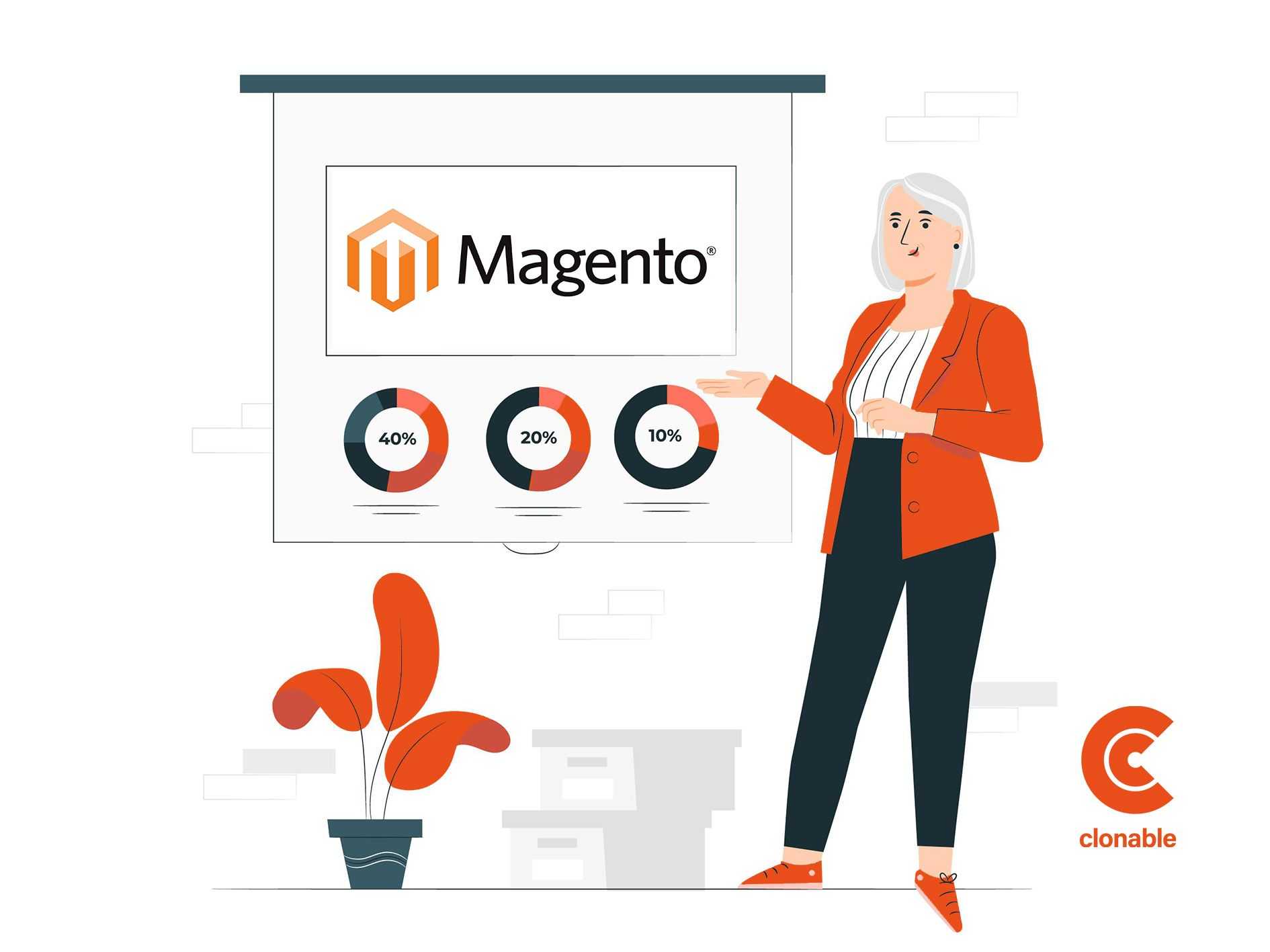Magento translation? Why Clonable is ideal for your translations
Magento is one of the best-known and most successful e-commerce platforms in the world. The CMS offers businesses a flexible and scalable solution for their online stores. One of Magento's best features is the ability to create multiple storeviews, often intended for international purposes. This allows companies to reach a wider audience by more easily translating their online store into multiple languages. When combined with Clonable, however, this system works even better. Why? We will explain that here.

Storeviews and translation: the 'old-fashioned' way
Using Magento storeviews for translations has many advantages. First, companies can more easily reach international markets. By creating a storeview for each language, companies can easily make their products and services available to a wider international audience. This can help increase sales and exposure to new potential customers. And those customers are more likely to buy products if the web shop is translated for them.
But how do you arrange the translations? Normally, webshop owners with a Magento system have to arrange a translation themselves and then paste it into the respective storeview. This is a huge job. And there are a lot of costs involved. For example, take into account the cost of the project manager who takes on the project "translation Magento website" in the team, the cost of the external translator (often paid per word), the cost of the content manager who will put in the translated texts. And this has to be done continuously as new products are added to the range, certain texts change, and so on, so the costs don't just stop overnight. Moreover, you have to take into account that the initial set-up for a new language takes a lot of time, and all that time there will be no sales from your new foreign shop.
Storeviews and Clonable: remain flexible while automatically translating
If the Magento web store owner wants to use Clonable to set his Magento website in a different language, the process first starts the same as normal.
1. The web store builder creates a new storeview in which the basic configuration is put, such as the language, currency used, google analytics code, etc. This is done in a few hours.
2. Next, this store is put live, but set to 'no-index' so that the store is not visible to search engines. We call this store the so-called 'Ghost -storeview' at Clonable. The url of this store is then for example ghost-store-de.yourmagentostore.com
3. At Clonable we get to work cloning 'ghoststore-the.yourmagentostore.com' to a domain or subdomain. Which one this is that the customer chooses. For example, de.yourmagentostore.com or de-magentostore.com.
4. Each new change or addition in terms of text is then automatically translated. This creates flexibility for the online store so they no longer have to worry about translations, but can make adjustments to pages, menus, blog posts, SEO, payment methods, and more.
5. It is advisable to run a proofreader through the web store to check it for any translation errors. But the owner is free to decide how many hours and money they will spend on this.
In terms of costs, this saves a huge amount of money on the initial translations and the translations needed monthly to keep the web store up to date. As a web shop owner you remain flexible, because
- You can still easily change your design from the foreign variant.
- You can still exclude certain products, change prices etc. for the foreign market.
- If you want to build other pages for the foreign market, this can be done easily and without affecting the webshop in the original language.





